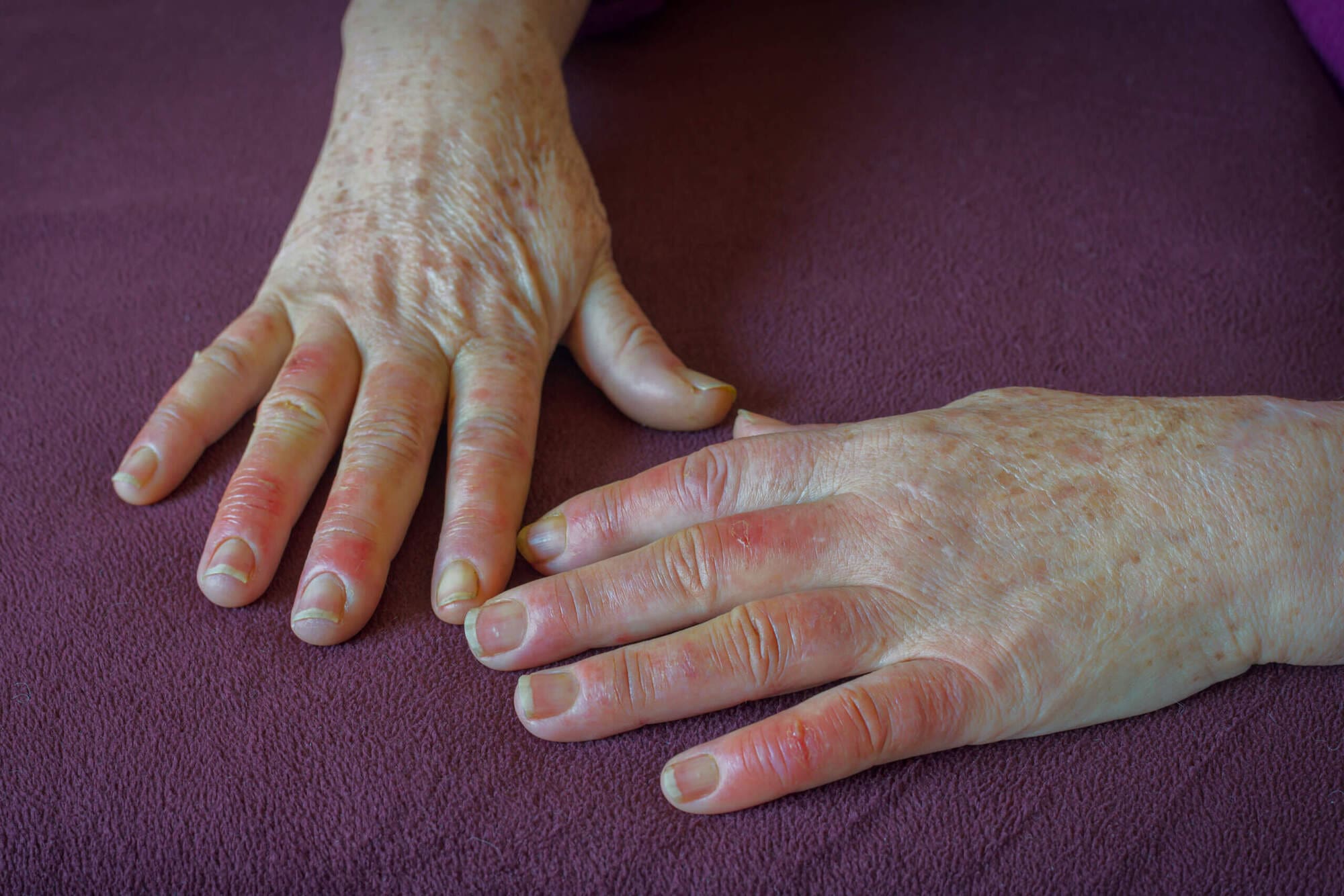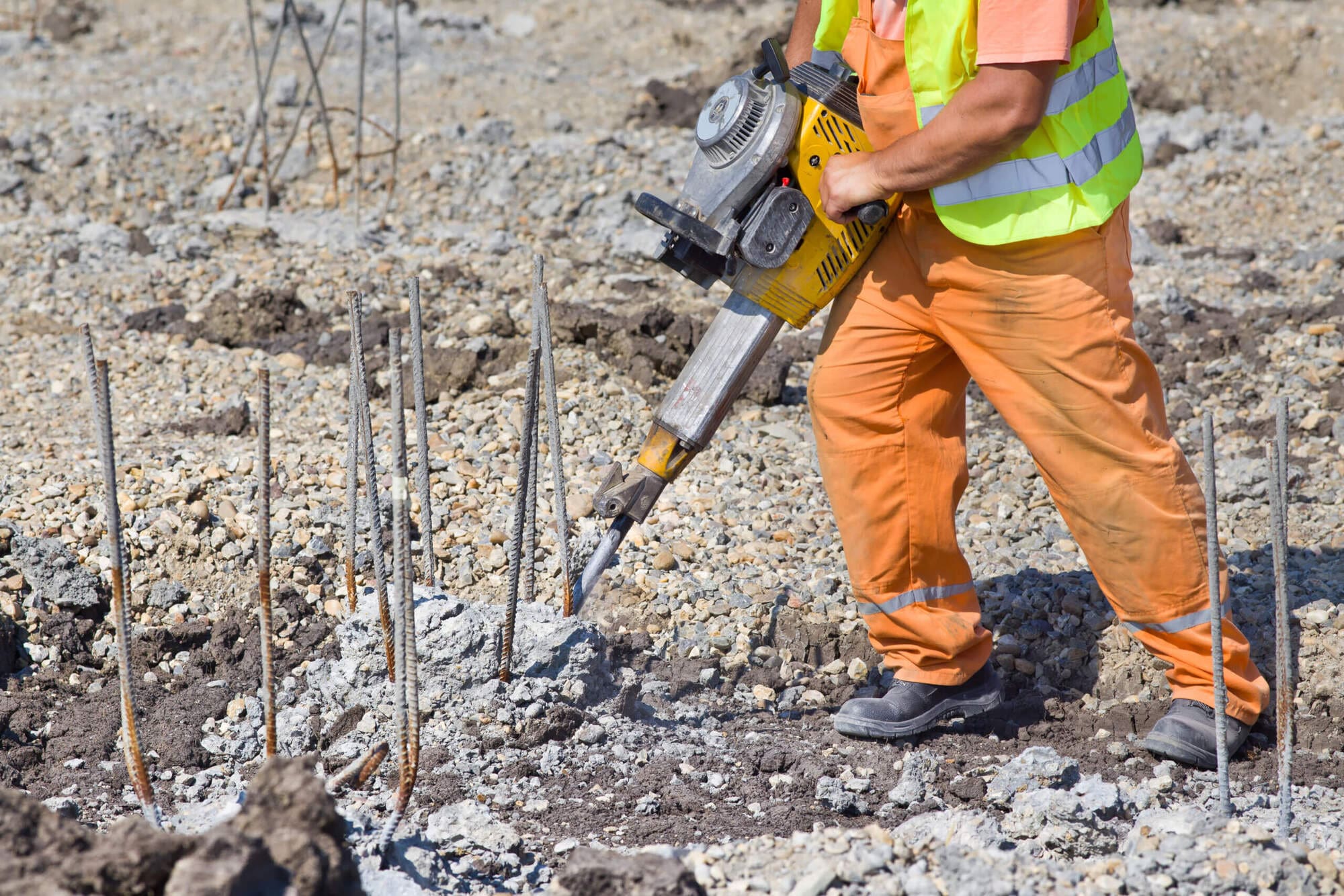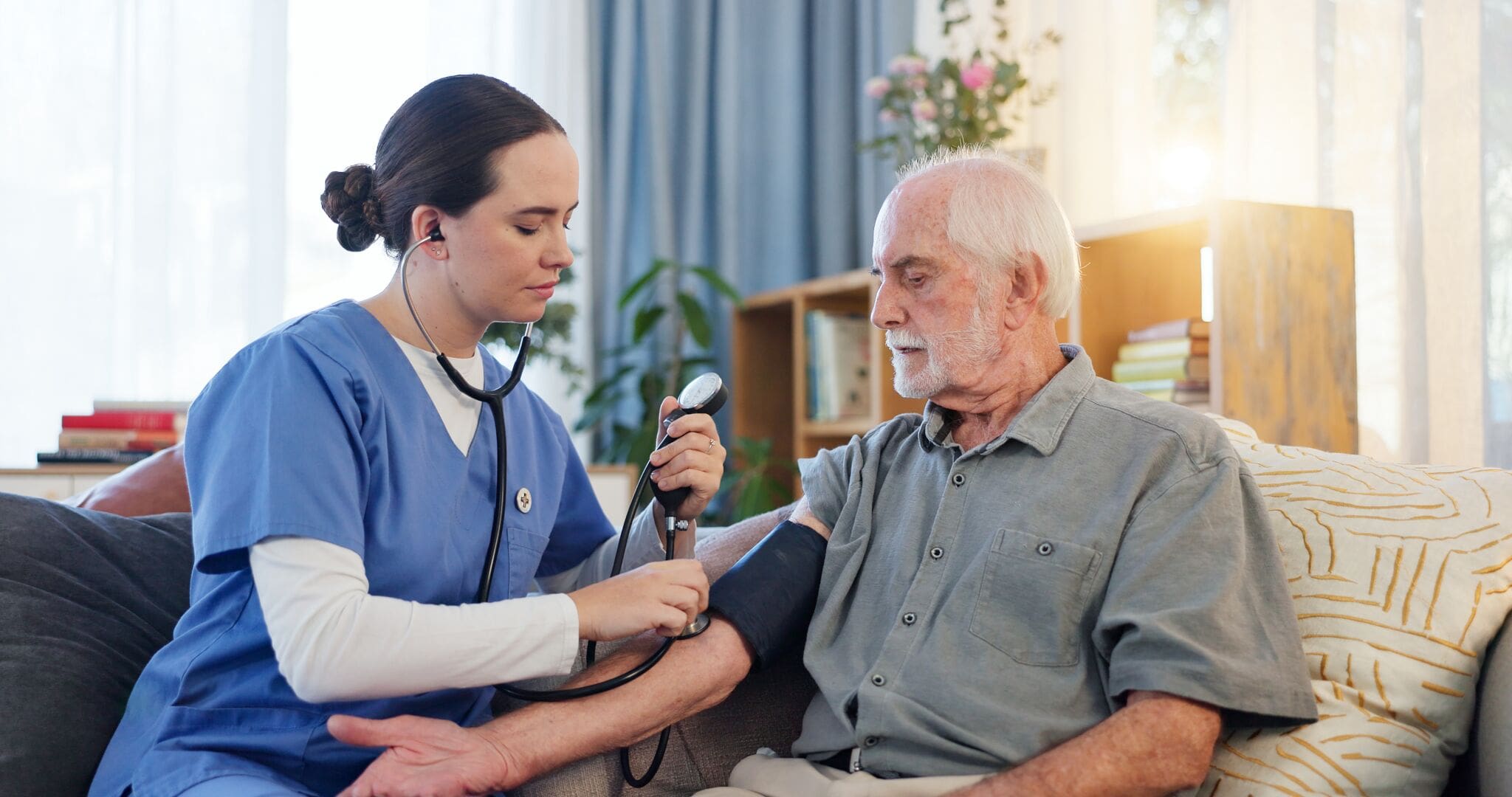In this article
Hand-Arm Vibration Syndrome (HAVS) is a serious occupational health condition that affects thousands of workers across various industries. Prolonged exposure to hand-transmitted vibration from power tools and machinery can lead to irreversible damage, impacting workers’ quality of life and their ability to perform everyday tasks.
According to statistics from 2022/23, 54% of workers with work-related ill-health had musculoskeletal disorders like HAVS and there were 215 new cases of HAVS in 2023. The majority of new cases are in men, and this most likely reflects the smaller number of women who work in the typical industries from which HAVS cases are connected. Indeed, of a total of 3,235 cases of HAVS over a ten-year period, only 10 were associated with women.
A Preventable Condition
As a preventable condition, Hand-Arm Vibration Syndrome demands rigorous risk assessment and management strategies to protect workers from harm. In industries such as construction, manufacturing, forestry and engineering, employees frequently use vibrating tools such as drills, chainsaws, grinders and jackhammers. Without proper control measures, continued exposure to vibration can result in symptoms ranging from tingling and numbness to painful episodes and even permanent loss of hand function. Given the severe consequences of HAVS, employers have a legal and ethical duty to identify and mitigate risks effectively.
Regulatory bodies, such as the Health and Safety Executive (HSE) in the UK, provide clear guidelines on controlling vibration exposure in the workplace. Understanding the importance of HAVS risk assessments is key to ensuring compliance with safety regulations, protecting workers and minimising financial and legal liabilities for businesses. These assessments play a crucial role in identifying hazardous exposure levels, implementing control measures and ensuring continuous monitoring to prevent long-term health issues.
What Is HAVS?
Hand-Arm Vibration Syndrome (HAVS) is a medical condition caused by prolonged exposure to vibrating tools and machinery. It primarily affects the hands and arms, leading to symptoms that range from mild discomfort to severe and permanent disability. HAVS is classified as an industrial disease and is recognised as a significant occupational health risk in many industries.
The condition develops over time due to repeated exposure to vibration, often from handheld power tools such as chainsaws, grinders and jackhammers. The vibration from these tools can damage the nerves, blood vessels and joints in the hands and arms, leading to a range of symptoms. Early signs include tingling, numbness and loss of grip strength, but if left unchecked, HAVS can progress to chronic pain, finger blanching (Raynaud’s phenomenon) and even complete loss of hand function.

Three Primary Components
There are three primary components of HAVS:
- Neurological effects
- Vascular effects
- Musculoskeletal effects
Neurological effects are those that are the result of damage to the nerves in the fingers, hand and arm. Neurological symptoms include loss of sensation, tingling and numbness in the fingers, making it difficult to handle small objects or perform precise tasks.
Vascular effects are those that are related to the blood vessels and blood supply. Vascular symptoms include the constriction of blood vessels that leads to poor circulation and causes the fingers to turn white. This condition is also known as vibration-induced white-finger, or VWF. It can become painful, particularly in cold conditions. The first case of vibration-induced white finger was observed in the fingers of miners in Italy in 1911 where symptoms of cyanosis, pallor and chills were reported. The miners were using hammer drills for extended periods, and this damaged the sensation in their hands.
Pain and stiffness in the joints of the hand, wrist and arms are the musculoskeletal effects associated with HAVS. These symptoms can limit movements and strength as well as overall dexterity.
Progression
HAVS is a progressive disorder. This means that once symptoms begin, they can worsen over time if exposure continues without intervention. The damage caused by HAVS can be reversible, making prevention and early detection very important. Both employers and workers must be aware of the risks and take appropriate measures to minimise exposure to harmful vibration levels.
Why Are HAVS Risk Assessments Needed?
Hand-Arms Vibration Syndrome is a preventable but irreversible condition caused by prolonged exposure to vibration tools and machinery. As discussed, without proper risk management, workers can suffer permanent nerve, vascular and musculoskeletal damage, leading to loss of dexterity, chronic pain and an inability to perform basic tasks.
A HAVS risk assessment is a structured process that identifies, evaluates and controls vibration exposure in the workplace. It helps employers protect workers, comply with legal requirements and prevent financial and reputational damage to their business. Let’s look at the key reasons why HAVS risk assessments are essential.
Legal and Regulatory Compliance
In many countries, including the UK, businesses are legally required to assess and control vibration exposure to protect workers’ health.
UK Legislation: The Control of Vibration at Work Regulations 2005
This regulation establishes:
- Exposure Action Value (EAV) – 2.5 m/s2 A(8): Employers must take action if a worker’s daily exposure exceeds this level.
- Exposure Limit Value (ELV) – 5.0 m/s2 A(8): No worker should exceed this maximum daily limit.
Under these regulations, employers must:
- Conduct a vibration risk assessment to determine exposure levels.
- Implement control measures to reduce risks.
- Provide health surveillance for employees regularly exposed to vibration.
- Keep accurate records of risk assessments and control measures.
Legal Consequences of Non-Compliance
Failure to comply with HAVS regulations can result in:
- Prosecution by the Health and Safety Executive (HSE).
- Fines running into thousands or even millions of pounds.
- Compensation claims from affected workers.
- Business disruption due to investigations or enforcement actions.
Case Study Example: In 2016, a UK company called Asset Internation Limited was fined £200,000 after multiple workers developed HAVS due to excessive vibration exposure. The company is a pipe manufacturer based in South Wales and between April 2014 and July 2015, seven employees reported cases of HAVS or Carpal Tunnel Syndrome (CTS) resulting from the use of vibrating tools. The company failed to monitor tool usage, provide training or implement effective control measures. An investigation by the Health and Safety Executive revealed that the company lacked sufficient risk assessments and health surveillance protocols. Consequently, Asset Internation Limited pleaded guilty to breaches of the Control of Vibration of Work Regulations 2005.
This case highlights the severe consequences that companies face for neglecting to implement proper HAVS risk assessments and control measures. They serve as critical reminders of the importance of adhering to health and safety regulations to protect employees from preventable occupational diseases.
Prevention of Long-Term Health Issues
HAVS is a progressive and largely irreversible. A risk assessment helps prevent the issues associated with HAVS. A HAVS risk assessment helps to:
- Identify workers at risk before symptoms appear.
- Reduce exposure levels through better work practices.
- Implement health surveillance for early detection.
By taking preventive action, employers can avoid a situation where workers develop irreversible HAVS, safeguarding their long-term health and wellbeing.
Financial and Operational Benefits
Unchecked vibration exposure increases costs for businesses due to compensation claims, lost productivity and potential fines. A HAVS risk assessment helps reduce financial risks and improve efficiency.
The Cost of Ignoring HAVS Risks
Increased Absenteeism
Workers with HAVS may take time off due to pain or discomfort, leading to disruptions in workflow and missed deadlines.
Compensation Claims
Workers diagnosed with HAVS can claim thousands of pounds in compensation, increasing employer liability.
Higher Insurance Premiums
If HAVS-related claims increase, employers may face rising insurance costs.
Reduced Productivity
Workers with HAVS struggle to use tools effectively, leading to slower work rates and lower efficiency.
The Financial Benefits of HAVS Risk Assessments
Lower Absenteeism
Healthier works mean fewer sick days and a more stable workforce.
Reduced Compensation Claims
Preventing HAVS protects businesses from expensive legal claims.
Better Productivity
Workers who use tools safely maintain efficiency without risk of injury.
By proactively managing vibration risks, businesses save money while ensuring a safer, more productive workplace.
Improving Workplace Safety Culture
A strong safety culture ensures workers feel valued and protected, leading to better morale, engagement and retention. HAVS risk assessments show that a company prioritises worker health and wellbeing.
Benefits of a Strong Safety Culture
Increased Worker Engagement
Employees are more likely to follow safety procedures when they see their employer is committed to protecting them.
Improvement Reputation
A company with a good safety record attracts and retains skilled workers.
Better Compliance Regulations
A proactive approach ensures businesses stay ahead of legal requirements.
When workers see that safety is taken seriously, they are more likely to follow best practices, leading to fewer accidents and better workplace morale.
Meeting Ethical Responsibilities
Employers have a duty of care to their workforce. A HAVS risk assessment is not just about legal compliance. It’s about protecting workers from preventable harm.
- Moral Imperative: No worker should suffer life-changing injuries due to avoidable workplace hazards.
- Employee Trust: Workers who feel safe are more loyal and committed to their employer.
By conducting HAVS risk assessments, businesses demonstrate that they care about their employees’ long-term health and are willing to invest in their safety.
In sum, HAVS Risk Assessments are essential for:
- Legal compliance
- Preventing health issues
- Financial protection
- Creating a safety culture
- Fulfilling ethical duties.
Employers must regularly assess, monitor and reduce vibration exposure to protect their workforce and business.+

Exposure Limits Explained
To effectively manage the risk of Hand-Arm Vibration Syndrome (HAVS) it is essential to understand vibration exposure limits. As outlined in the section above when discussing legal and regulatory compliance, exposure limits help determine how much vibration a worker can be safely exposed to before intervention is required. Regulatory bodies such as the Health and Safety Executive (HSE) in the UK have established thresholds to guide employers in protecting their workers from excessive vibration exposure.
Understanding Vibration Measurement
Vibration exposure is measured using acceleration in metres per second squared (m/s2). This is expressed as an A(8) value, which represents the daily exposure level normalised over an eight-hour workday. The A(8) value is crucial in assessing whether a worker’s exposure exceeds safe levels and determining necessary control measures.
Vibration exposure is influenced by:
- Magnitude of vibration – The intensity of vibration produced by the tool or equipment.
- Duration of exposure – The total time a worker uses vibrating equipment in a work shift.
- Frequency and direction of vibration – The way in which vibration travels through the hands and arms.
The combination of these factors determines the overall risk level of HAVS.
Legal Exposure Action and Limit Values
In the UK, the Control of Vibration at Work Regulations 2005 outlines two key exposure limits, as explained above.
Exposure Action Value (EAV) – 2.5 m/s2 A(8)
- This is the lower threshold at which employers must take action to reduce vibration exposure.
- Once workers exceed this level, employers are legally required to introduce control measures, such as modifying work processes, rotating tasks or providing low-vibration tools.
- While this is not a strict “safe” limit, exceeding it regularly increases the risk of developing HAVS over time.
Exposure Limit Value (ELV) – 5.0 m/s2 A(8)
- This is the maximum legal limit for daily vibration exposure.
- Workers must not exceed this level under any circumstances.
- If exposure reaches or surpasses this value, immediate intervention is required to reduce the risk.
- Employers who allow workers to exceed the ELV may face legal penalties, including fines and prosecution.
These limits help employers determine when protective measures are necessary and ensure that no worker is exposed to dangerous vibration levels for prolonged periods.
Calculating Vibration Exposure
To calculate daily vibration exposure, employers typically use the following formula:

Where:
- A(8) = Daily exposure level (m/s2).
- T = Time spent using the tool (in hours).
- To = Reference period (8 hours).
- a = vibration magnitude of the tool (m/s2).
Alternatively, employers can use a HAVS exposure calculator, such as those provided by the HSE, to determine exposure levels more easily.
Tool Vibration Data and Points System
Manufacturers often provide a vibration magnitude value for each tool, which can be used to estimate exposure risk. A common approach for simplifying exposure assessment is the HAVS points system, where:
- 100 points = EAV (2.5 m/s2 A(8))
- 400 points = ELV (5.0 m/s2 A(8))
Each tool’s vibration level corresponds to a points value per hour of use, allowing for quick assessment of exposure risk. For example:
- A grinder with a vibration level of 8 m/s2 contributes 320 points per hour (almost reaching the ELV in just over an hour).
- A drill with a vibration level of 3 m/s2 contributes 36 points per hour, meaning a worker could use it for nearly three hours before reaching the EAV.
This method helps employers allocate safe working times for each tool and identify tasks that may require rotation or additional controls.
Factors Affecting Exposure Limits
Several factors can influence the accuracy of vibration exposure calculations and the actual risk to workers:
Grip Force and Tool Handling
- The way a worker holds a vibrating tool can significantly affect the amount of vibration transferred to their hands.
- A firmer grip often increases vibration exposure, making it important to train workers on correct handling techniques.
Tool Condition and Maintenance
- Worn-out tools or poorly maintained equipment can produce higher vibration levels than the manufacturer’s stated value.
- Regular maintenance and replacing old tools can reduce vibration exposure.
Work Surface and Material
- Harder materials (e.g., concrete, metal) can amplify vibration levels.
- Using vibration-dampening pads or different cutting techniques can help mitigate this.
Individual Susceptibility
- Some workers may develop HAVS symptoms more quickly due to pre-existing conditions, cold weather exposure or genetic factors.
- Employers should consider individual health monitoring as part of their risk assessment.
Mitigating Excessive Vibration Exposure
To prevent workers from exceeding legal exposure limits, employers should implement a hierarchy of control measures, including:
- Elimination – Removing the need for vibrating tools where possible and using alternative methods.
- Substitution – Replacing high-vibration tools with lower-vibration alternatives.
- Engineering Controls – Using anti-vibration handles, dampening materials or automated machinery.
- Administrative Controls – Limiting tool usage time, introducing job rotation and providing breaks.
- Personal Protective Equipment (PPE) – Providing anti-vibration gloves, although these are not a primary control method.
By understanding exposure limits and how to manage them, employers can significantly reduce the risk of HAVS in the workplace.

Key Takeaways
- Exposure limits (EAV = 2.5 m/s², ELV = 5.0 m/s²) define safe vibration levels.
- Daily exposure is calculated based on tool vibration magnitude and duration of use.
- The HAVS points system simplifies risk assessment and helps set safe tool usage times.
- Real-world exposure can be higher than manufacturer ratings due to handling, surface material and tool wear.
- Employers must act when workers exceed the EAV and ensure no one surpasses the ELV.
- A combination of elimination, engineering controls and administrative measures is the best approach to reducing HAVS risks.
What to Include in a HAVS Risk Assessment
A HAVS risk assessment is essential for identifying and controlling vibration exposure in the workplace. It helps employers comply with legal requirements, protect workers from long-term health damage and improve overall workplace safety.
A comprehensive HAVS risk assessment should include the following key elements:
Identifying Sources of Vibration Exposure
The first step in a HAVS risk assessment is to identify all sources of vibration within the workplace. This involves:
Listing all vibrating tools and equipment – Identify any handheld power tools, machines, or vehicles that expose workers to vibration. Common sources include:
- Drills, grinders and jackhammers in construction and manufacturing.
- Chainsaws and brush cutters in forestry and landscaping.
- Pneumatic tools used in engineering and automotive industries.
Observing work activities – Watch how workers use these tools and how long they are exposed to vibration each day.
Consulting workers – Employees who regularly use vibrating equipment can provide valuable insights into their daily exposure and any symptoms they may be experiencing.
Measuring and Evaluating Vibration Exposure Levels
Once vibration sources are identified, the next step is to measure and evaluate exposure levels. This helps determine whether workers are exceeding safe limits. As mentioned above, the two values that need to be calculated are the vibration magnitude and calculating daily exposure A(8).
HAVS risk assessments should determine each worker’s daily exposure, expressed as A(8) in m/s2. The Health and Safety Executive (HSE) provides ready-reckoner tables and online calculators to assist with this.
Comparing Exposure Levels to Legal Limits
| Exposure Level | Legal Limit | Action Required |
| 2.5 m/s² A(8) – Exposure Action Value (EAV) | Daily vibration exposure level at which employers must take action to reduce risk. | Implement control measures such as job rotation and anti-vibration gloves. |
| 5.0 m/s² A(8) – Exposure Limit Value (ELV) | Maximum daily exposure limit that must not be exceeded. | Immediate action required to reduce exposure. |
If workers exceed these limits, employers must take action to reduce exposure immediately.
Assessing the Risk to Workers
Not all workers are affected in the same way. A proper HAVS risk assessment should evaluate:
- Health Conditions and Susceptibility – Workers with existing medical conditions (e.g. circulatory disorders) may be more vulnerable to vibration exposure.
- Duration and Frequency of Exposure – Workers who use vibrating tools frequently or for long periods face a higher risk.
- Work Methods and Posture – Poor posture and excessive grip force can increase vibration exposure.
- Personal Protective Equipment (PPE) use – Assess whether workers are using anti-vibration gloves or other protective gear correctly.
By considering these factors, employers can determine which employees are at the highest risk and prioritise them for intervention.
Implementing Control Measures to Reduce Risk
Once risks have been identified, control measures must be put in place to reduce vibration exposure as much as possible. These can include:
Engineering Controls:
- Using low vibration tools – Select tools with built-in vibration-reducing technology.
- Regular maintenance – Keep tools sharp, well-lubricated and in good condition to reduce unnecessary vibration.
- Reducing trigger time – Automate tasks where possible to reduce reliance on vibrating tools.
Administrative Controls:
- Job rotation – Rotate workers between different tasks to limit individual exposure.
- Training and awareness – Educate employees on how to use tools correctly and recognise early symptoms of HAVS.
- Monitoring work schedules – Implement time limits for using vibrating tools and enforce breaks.
Personal Protective Equipment (PPE):
- Anti-vibration gloves – While not suitable for other control measures, these can provide extra protection when used correctly.
- Keeping hands warm – Cold conditions can worsen HAVS symptoms, so providing warm protective clothing can help.
A HAVS risk assessment should document all control measures in place and outline any further improvements needed.
Implementing Health Surveillance
Regular health checks help identify early symptoms of HAVS before it becomes severe. Employers should:
- Provide occupational health screening – Workers at risk should undergo regular health checks to monitor any changes in sensation, grip strength or circulation.
- Keep health records – Maintain records of any reported symptoms or diagnosed cases of HAVS for future reference.
- Take early action – If any worker shows early HAVS symptoms, their exposure should be reduced immediately and medical advice should be sought.
Health surveillance is mandatory for workers regularly exposed to vibration levels above the Exposure Action Value (2.5 m/s2 A(8)).
Keeping Records and Reviewing the Assessment
A HAVS risk assessment is not a one-time process. It must be regularly reviewed and updated.
- Keeping accurate records – Employers should document vibration exposure measurements, risk assessment findings, control measures implemented and health surveillance results.
- Reviewing the assessment – Risk assessments should be reviewed annually (or more frequently if exposure levels change) and after introducing new tools or processes. Additionally, if a worker develops HAVS symptoms, the risk assessment should be reviewed.
By updating assessments regularly, employers ensure ongoing protection for their workers.
In summary, a thorough HAVS risk assessment includes:
- Identifying sources of vibration exposure.
- Measuring and evaluating exposure levels.
- Assessing the risk to individual workers.
- Implementing control measures to reduce risk.
- Providing health surveillance.
- Keeping records and regularly reviewing the assessment.
By following these steps, employers can protect workers from HAVS, comply with legal requirements and foster a culture of workplace safety.

The Bottom Line
Hand-Arm Vibration Syndrome (HAVS) isn’t just an occupational hazard—it’s a serious, irreversible condition that can rob workers of their ability to grip, feel and work. From construction sites to factory floors, thousands of employees face daily exposure to power tools, often unaware of the permanent damage it can cause.
However, HAVS is entirely preventable, and that’s where HAVS risk assessments play a vital role.
Why Do They Matter?
A HAVS risk assessment isn’t just a legal requirement—it’s a lifeline. It protects workers, prevents costly legal claims, and ensures compliance with safety regulations. Companies that fail to assess risks properly have faced huge fines, but the real cost is to workers’ health.
What’s Involved?
As summarised above, a comprehensive risk assessment should:
- Identify vibration sources and measure exposure levels
- Assess who is most at risk
- Implement control measures to reduce exposure
- Provide health surveillance to detect early symptoms
- Regularly review and improve safety practices
Final Thoughts
HAVS is preventable, but only with the right precautions. A well-executed risk assessment isn’t just about ticking boxes. It’s about protecting workers, adopting a safety-first culture and preventing lifelong harm.






